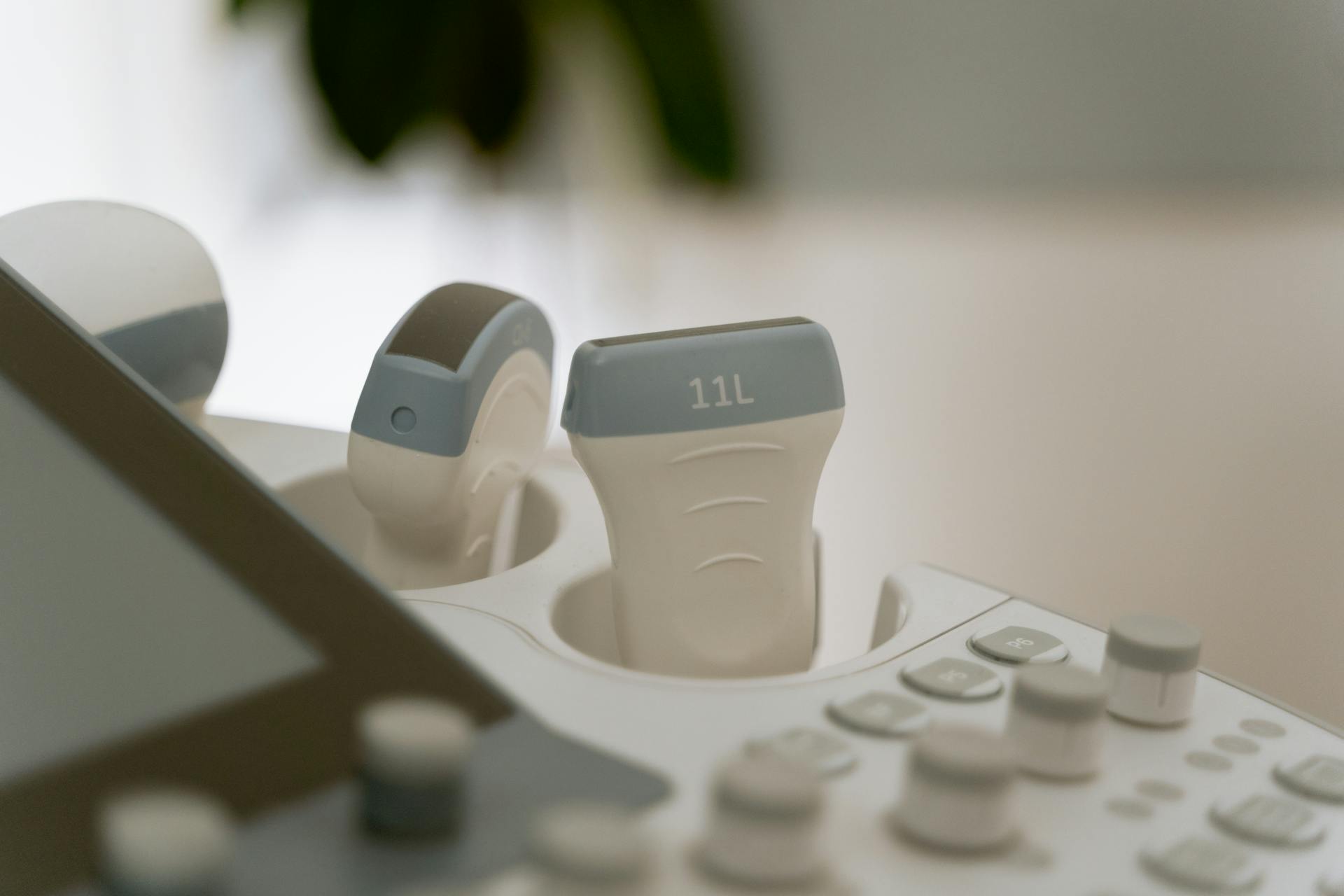
3D printers have revolutionized the way we manufacture and create objects. They have become increasingly popular in recent years as the technology has improved and the price has come down. But are they really worth it?
There are many advantages to owning a 3D printer. They are relatively inexpensive, easy to use, and can be used to create a wide variety of objects. You can find many different designs for 3D printed objects online or create your own. They are also great for prototyping or for creating one-of-a-kind objects.
The downside to 3D printers is that they can be slow, and the quality of the prints can vary. They also require some technical knowledge to set up and use.
Overall, 3D printers are a great tool to have, especially if you are interested in creating or designing objects. If you are looking for a quick and easy way to create objects, then a 3D printer may not be the best option. But if you are willing to put in the time and effort to learn how to use one, then a 3D printer can be a great addition to your home or office.
You might like: Inkjet Printer
What are the benefits of using a 3D printer?
There are many benefits to using a 3D printer. Perhaps the most obvious benefit is that it allows you to create three-dimensional objects from a digital file. This can be useful for a variety of reasons, such as creating prototypes of products or for making custom pieces for a specific project.
Another benefit of 3D printing is that it is often faster and less expensive than traditional manufacturing methods. This is because there is no need to create molds or templates, and the objects can be printed quickly and easily. Additionally, 3D printers can be used to create objects that would be otherwise impossible to create using traditional methods.
Finally, 3D printing can be a great way to learn about and experiment with new materials and processes. This is because you can easily and cheaply print a variety of objects to test out new ideas. Additionally, there is a growing community of 3D printing enthusiasts who are always happy to share their knowledge and experiences.
How does a 3D printer work?
A 3D printer is a computer-controlled machine that is capable of printing three-dimensional objects. 3D printers work by depositing a material, such as plastic, metal, or ceramic, in layers to create an object.
3D printers are often used in the manufacturing process to create prototypes or to create finished products. 3D printers can create products that would be otherwise impossible or impractical to create using traditional manufacturing methods.
How does a 3D printer work?
3D printers work by depositing a material in layers to create an object. The material is deposited in accordance with a computer-generated model of the object being created.
3D printers generally use one of two technologies to deposit the material: fused deposition modeling (FDM) or stereolithography (SLA).
FDM printers work by extruding a molten material, such as plastic, through a nozzle. The nozzle moves in accordance with the computer-generated model of the object being created, depositing the material in layers.
SLA printers work by using a laser to cure a photopolymer resin. The laser is directed at a build platform, where the object being created is formed. The laser causes the photopolymer resin to solidify, and the object is then built up in layers.
3D printers can create objects in a variety of materials, including metals, plastics, ceramics, and even human tissue. 3D-printed products are often used in the manufacturing process to create prototypes or to create finished products.
3D printers have the ability to create products that would be otherwise impossible or impractical to create using traditional manufacturing methods. For example, 3D printers can create products with intricate designs or that have complex shapes.
3D printing is a rapidly evolving technology with limitless potential. 3D printers are becoming more affordable and easier to use, and the range of materials that can be printed is constantly expanding. As the technology continues to develop, the potential applications of 3D printing are endless.
A unique perspective: Which Printer Is Best for Sublimation?
What are the limitations of 3D printing technology?
3D printing technology has been around for quite some time, but it has only recently become popularized and mainstreamed. Despite its recent rise in popularity, there are still some limitations to 3D printing technology that need to be considered.
Firstly, 3D printing technology is still relatively new and undeveloped compared to other technologies. This means that there are still some kinks that need to be ironed out in order to make it more efficient and effective. Additionally, 3D printing technology is also quite expensive, with the cost of a 3D printer often being out of reach for the average consumer.
Secondly, 3D printing technology is limited by the materials that can be used. While there has been some progress in this area, the majority of 3D printers are only able to print using plastic materials. This limitation severely hampers the potential of 3D printing technology, as plastic is not a very strong or durable material.
Thirdly, the accuracy of 3D printing technology is still not perfect. While 3D printers have gotten much better over the years, there are still some issues with regard to accuracy and detail. This is something that needs to be addressed in order to make 3D printing technology more viable for use in a wider range of applications.
Overall, 3D printing technology still has some limitations that need to be considered. However, it is important to keep in mind that 3D printing technology is still relatively new and these limitations may be addressed in the future as the technology continues to develop.
On a similar theme: What Printers Are Good for Sublimation?
What are the costs associated with 3D printing?
The costs associated with 3D printing technology can be divided into two main categories: the cost of the printer itself, and the cost of materials used for printing.
The cost of 3D printers has fallen significantly in recent years, making them more accessible to consumers and small businesses. However, they still remain a significant investment, with high-end printers costing several thousand dollars. In addition to the initial purchase price, 3D printers require regular maintenance and upkeep, which can add to the overall cost of ownership.
The cost of 3D printing materials also varies widely, depending on the type of printer and the material being used. PLA and ABS plastic filaments are the most common materials used in consumer-grade 3D printers, and they typically cost between $30 and $50 per kilogram. More exotic materials, such as metal or ceramic, can cost several hundred dollars per kilogram.
Overall, the cost of 3D printing technology is falling as the technology becomes more commonplace. However, it is still a significant investment, with the cost of materials and printers both needing to be considered.
Recommended read: Sublimation Printer
How long does it take to print an object using a 3D printer?
3D printers have come a long way in a short amount of time. In the early days of 3D printing, it could take hours or even days to print a single object. Now, with modern 3D printers, it is possible to print an object in a matter of minutes.
So, how long does it take to print an object using a 3D printer? The answer depends on a number of factors, including the size of the object, the type of material being used, and the quality of the printer.
Generally speaking, smaller objects can be printed faster than larger ones. This is because the printer does not have to move the print head as far when printing smaller objects. As a result, smaller objects can be printed in a matter of minutes.
Larger objects, on the other hand, can take hours or even days to print. This is because the printer has to move the print head further when printing larger objects. As a result, larger objects can take a significant amount of time to print.
The type of material being used can also affect the print time. For example, printing with ABS plastic can take longer than printing with PLA plastic. This is because ABS plastic is more difficult to print with and requires higher temperatures. As a result, ABS prints can take longer than PLA prints.
Finally, the quality of the printer can also affect the print time. Higher-end printers generally have a higher quality and can print faster than lower-end printers. This is because higher-end printers have better build quality and can handle higher temperatures.
In conclusion, the answer to the question "How long does it take to print an object using a 3D printer?" depends on a number of factors. Smaller objects can be printed in a matter of minutes, while larger objects can take hours or even days to print. The type of material being used can also affect the print time, with harder plastics taking longer to print than softer plastics. Finally, the quality of the printer can also affect the print time, with higher-end printers being able to print faster than lower-end printers.
Related reading: Giclee Prints Worth
What are the different types of 3D printers available on the market?
3D printers are becoming increasingly popular as the technology continues to develop and advance. There are now many different types of 3D printers available on the market, each with its own advantages and disadvantages.
The most common type of 3D printer is the fused deposition modeling (FDM) printer. FDM printers work by melting and extruding a filament of plastic or other material to build up the desired object layer by layer. FDM printers are typically the most affordable type of 3D printer and are relatively easy to use. However, FDM prints can often have visible layer lines and are not as strong or precise as prints from other types of 3D printers.
Another common type of 3D printer is the stereolithography (SLA) printer. SLA printers work by curing a layer of photopolymer resin with a laser or other light source. SLA prints are typically very strong and precise, but the printers themselves are usually more expensive than FDM printers. Additionally, SLA prints can be sensitive to UV light and heat, so they need to be stored and handled carefully.
Yet another type of 3D printer is the selective laser sintering (SLS) printer. SLS printers work by sintering (fusing) together small particles of plastic, metal, or ceramic powder with a laser. SLS printers are typically more expensive than both FDM and SLA printers, but they are also capable of printing much larger and more complex objects. Additionally, SLS prints are often smoother and more flexible than prints from other types of 3D printers.
Finally, there are also a few emerging technologies that show promise for future 3D printing applications. One such technology is carbon fiber printing, which uses carbon fiber reinforcement to produce strong and lightweight 3D prints. Another is metal printing, which can be used to create 3D prints made from metal alloys. Metal Printing is still in its early stages, but it has the potential to revolutionize manufacturing by allowing companies to produce metal parts and products using additive manufacturing technology.
See what others are reading: Expensive Mattresses Worth
What materials can be printed using a 3D printer?
Different materials can be printed using a 3D printer. The most common printing material is plastic, but there are also other materials that can be printed, such as metal, ceramic, and even human tissue.
Plastic is the most popular printing material because it is relatively affordable and easy to work with. There are different types of plastic that can be printed, such as acrylonitrile butadiene styrene (ABS) and polylactic acid (PLA). Each type of plastic has its own properties, such as strength, flexibility, and resistance to heat.
Metal can also be printed using a 3D printer. This printing process is called direct metal laser sintering (DMLS). In DMLS, a laser is used to fuse small metal powder particles together to create the desired 3D shape. This printing method is often used to create prototypes or small batches of parts.
Ceramic can also be printed using a 3D printer. This printing process is called slip casting. Slip casting is similar to DMLS, except that instead of a laser, a traditional ceramic glaze is used to fuse the ceramic powder particles together.
Human tissue can also be printed using a 3D printer. This printing process is called bioprinting. Bioprinting is often used to create medical implants, such as skin grafts, ligaments, and blood vessels.
What are the applications of 3D printing technology?
3D printing technology has come a long way since it was first invented in the 1980s. Today, there are many different applications for 3D printing technology, ranging from creating medical implants to manufacturing car parts. Below is a list of just a few of the many different applications for 3D printing technology.
Medical implants: One of the most common uses for 3D printing technology is to create medical implants. With 3D printing technology, surgeons can now create custom implants that fit a patient’s specific body shape. This is especially beneficial for patients who have undergone cancer treatment, as they often need implants that are different from the standard size.
Car parts: Another common use for 3D printing technology is to create car parts. With 3D printing technology, car manufacturers can create custom car parts that are lighter and stronger than the traditional parts. This helps to improve the fuel efficiency of the car and also reduces the weight of the car, which is important for safety.
Food: 3D printing technology is also being used to create food. With 3D printing technology, food can be created in any shape or size. This is especially beneficial for people with dietary restrictions, as they can now have food that is specifically tailored to their needs.
These are just a few of the many different applications for 3D printing technology. As 3D printing technology continues to advance, it is likely that there will be even more uses for it in the future.
What are the challenges associated with 3D printing?
3D printing technology has come a long way in recent years and its applications are growing exponentially. However, there are still many challenges associated with 3D printing, especially when it comes to mass production.
One of the biggest challenges is the high cost of 3D printers and materials. Although the cost of 3D printers has decreased significantly in recent years, they are still relatively expensive compared to traditional manufacturing methods. In addition, the cost of 3D printing materials can be quite high, especially when compared to the cost of traditional manufacturing materials.
Another challenge associated with 3D printing is the slow speed of production. Although 3D printers have become faster in recent years, they are still much slower than traditional manufacturing methods. This can be a major problem when trying to produce large quantities of items.
Another challenge is the lack of standardization. There are many different types of 3D printers and each one uses different software and file formats. This can make it difficult to interchange files between different printers and can also lead to compatibility issues.
Finally, 3D printing can be very messy and difficult to clean up. The powdery nature of some 3D printing materials can make them difficult to remove from surfaces and can also lead to respiratory problems if inhaled.
Despite these challenges, 3D printing is an exciting and rapidly growing technology with huge potential. As the technology continues to develop, it is likely that many of these challenges will be overcome.
Frequently Asked Questions
Is 3D printing worth the money?
3D printing is worth the money if you want to be able to print objects that are useful for your purposes. For example, if you're an artist and you want to be able to print model objects that you can use in your artwork, then 3D printing is definitely worth the money.
Is 3D printing a good hobby?
There is no one answer to this question as everyone’s interests vary. If you are interested in 3D printing for hobby purposes, it can be a fun way to create your own unique items and share them with friends and family.
Are 3D printers good for prototyping?
There’s no question that 3D printers are great for prototyping – they can speed up the design process and help produce more accurate prototypes.
Should I buy my own 3D printer or buy parts?
Buying your own 3D printer can be a good option if you want to have more flexibility and control over the printing process.
Is a 3D printer worth it?
Should you buy a 3D printer? That’s a question that ultimately comes down to your individual circumstances and needs. Before making a purchase, it’s important to consider the advantages and disadvantages of owning one. Advantages of owning a 3D printer include: You can create unique or customized objects. You can print models from digital files, making it easier to share ideas with others. Printers offer an economical way to produce large quantities of customized items. Disadvantages of owning a 3D printer include:
Sources
- https://www.bing.com/ck/a
- https://www.bing.com/ck/a
- https://www.bing.com/ck/a
- https://www.bing.com/ck/a
- https://www.bing.com/ck/a
- https://www.bing.com/ck/a
- https://www.bing.com/ck/a
- https://www.bing.com/ck/a
- https://www.bing.com/ck/a
- https://www.bing.com/ck/a
- https://www.bing.com/ck/a
- https://www.bing.com/ck/a
- https://www.bing.com/ck/a
- https://www.bing.com/ck/a
- https://www.bing.com/ck/a
Featured Images: pexels.com


